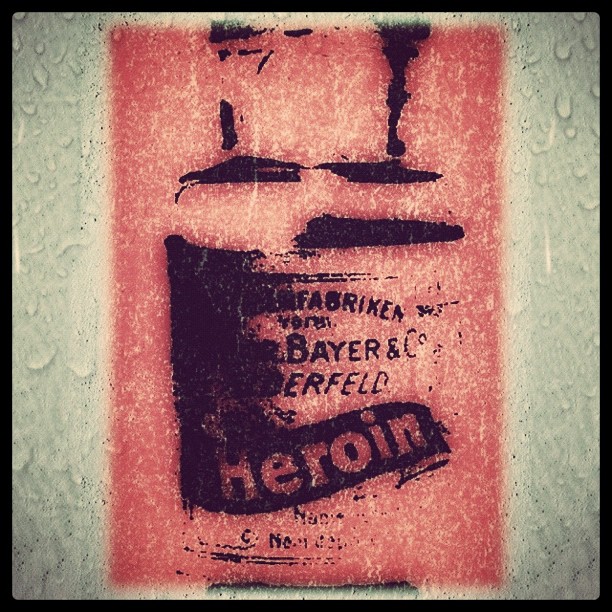This week the Atlantic City Police Department faced a dilemma that’s becoming sadly too familiar: The city of 39,000 saw six deaths from drug overdoses in the span of seven days. On Wednesday, officers responded to six overdose calls between the hours of 4:00 pm and 10:00 pm alone. Two of those overdoses were fatal. The other four people were saved, temporarily at least, by first responders who administered the opioid antagonist Narcan, which blocks opioid receptors and stops the effects on someone overdosing on heroin or heroin-related drugs like OxyContin or hydrocodone.
The ACPD took the sensible step of making a public safety announcement that a “potentially bad batch” of heroin was circulating in the Atlantic City area.
For the uninitiated, heroin–at least the heroin sold in New Jersey, New York and Philadelphia–is sold in little baggies marked with stamps (“ISIS” or “Lil Boosie”), that serve as a kind of brand marketing. Like any consumer good, people using heroin care about its quality. In a buyers’ market like this one, heroin is not always heroin. Sometimes it’s fentanyl, a powerful synthetic opioid that’s 50 to 100 times stronger than morphine (per the NIDA). Sometimes it’s carfentanyl, which can be many thousands of times stronger even than that. The stamp is so dealers who’ve gone out of their way to offer a superior product can let customers know about it.
Two of the fatal overdoses had come from heroin sold under the same brand name, so when the ACPD put out its warning, it included the name of the “bad” heroin and a photo of a baggie, with the stamp clearly visible. Problem is: for someone in the depths of a heroin addiction, a drug that’s killing people left and right might sound like just the medicine to get you through the next 24 to 36 hours. We point this out not to criticize the ACPD, but to give a sense of what they’re up against.
Do seasoned drug abusers really march off in the direction of an evil drug that’s killing their compatriots, precisely because it’s killing their compatriots?
Some people think they do.
“When will the press and other news outlets, police departments, etc. realize that by posting a picture of the current stamp on the bag that’s killing everyone only sends the addicts out in force to search for that specifically marked bag?”
That question was asked by Danielle Rivera, a Mays Landing resident, in response to the news coverage.
In an interview, Rivera said she was not an opioid user herself but was surrounded by the epidemic, in the form of friends and loved ones who were abusing or in recovery. She said she knew personally one person who had overdosed and died from the package the ACPD warned about.
“The general consensus seems to be, among those that are in recovery, is that it’s just a lose-lose situation,” she said about the decision to post the drug’s brand name, “because an addict is chasing a high.”
“It’s not that they don’t care. It’s just that they’re just not thinking clearly, at that time. They just want to get high and they need to get high.”
“These overdoses seem to come in waves, and they are able to track it to one stamped bag.
“It is a problem, but putting it in the media is a lose-lose situation. I don’t think it’s helping the addicts themselves.
“Without proper help, you’ll get high with whatever you can get high with. If that’s all your dealer has, you’re going to take it.”
Mike McGaffney, the house manager at a sober-living home in Pleasantville who is in recovery himself, said abusers he knew would seek out brands that were leading to overdoses.
“One thing I really don’t like is when they put out these press releases and they identify the bags,” he said.
For one thing, some users might get a false sense of security–if they’re not using the “bad” brand, they’ll be ok.
“The people that were using would actually seek out the stamps because it meant it was more powerful, because it gave you a better high. Because most of the people who are using at that stage of the game are just using to maintain. They’re not getting high anymore. They’re just keeping from getting sick.”
We asked Sgt. Kevin Fair, of the ACPD, if the safety warning might be an advertisement to some.
“Obviously, we do see overdoses in the city, but to see six in a six-hour period is alarming, which is why we put out that information.”
He said the hope was that an addict would be deterred.
“We’re hoping that they can move on, or go find somebody else, or whatever they need to do, or not use that particular brand or stamp.
“All heroin is bad, but with the alarming rate of the number of overdoses in that period of time, we felt that we should do our due diligence for the community.”
Podcast: Play in new window | Download
